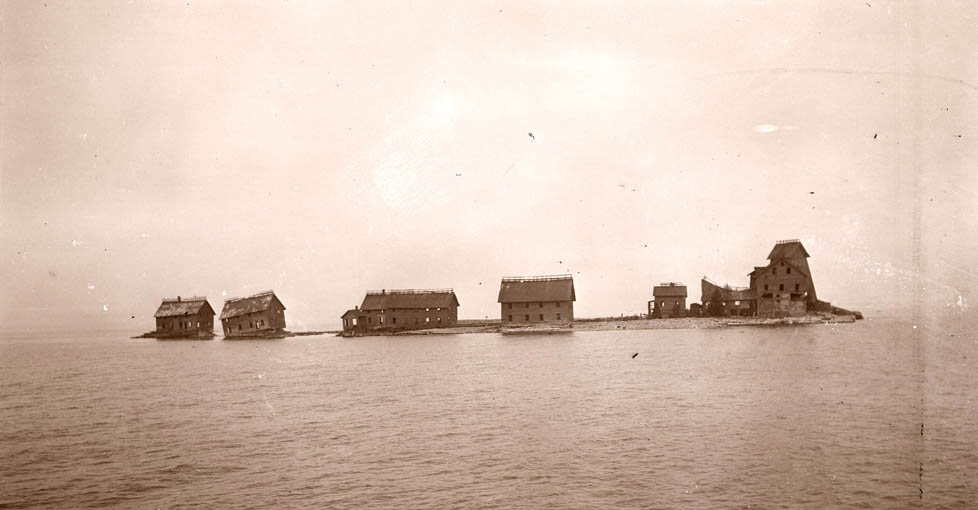At the point of the Sibley Peninsula in northwest Ontario, Canada, lies a little settlement known as Silver Islet as well as a small rocky island.
The Montreal Mining Company found a rich seam of pure silver on this little island in 1868. The island was just 2.5 meters (8 feet 2 inches) above the waves of Lake Superior at that time, measuring about 50 square meters (540 square feet). The Silver Islet Mining Company, led by Alexander H. Sibley, developed the site in 1870. They added crushed rock to the island’s area and constructed wooden breakwaters around it to block the lake’s waves. The islet was increased in size by more than ten times, and a tiny mining village was built up on the shore nearby.
In 1878, a second vein was found after the majority of the purest ore from the initial site had been extracted. The majority of the finest quality silver had been removed by 1883, and the metal’s price had dropped. When a coal cargo failed to arrive before the end of the shipping season, it was the last straw. The mining shafts on the islet, which were 384 meters below the surface, were flooded in early 1884 when the pumps that had been holding back the lake’s waters stopped working. The mine’s subterranean activities would never be resumed, and they would never be de-watered.

The mine produced $3.25 million worth of silver in its sixteen years of operation.
Originally constructed as housing for miners, the homes are now used as secluded vacation homes. The general store has been renovated and now offers light meals in its tea room in addition to a selection of trinkets and necessities.
The founder of Steep Rock Iron Mine in Atikokan, Ontario, Julian (Jules) Cross resided on Silver Islet, as described in an essay published by Syd Hancock on January 21, 1972, the day of Julian Cross’s passing. The Ontario Department of Public Records and Archives placed a bronze plaque outside the Atikokan Library & Museum to commemorate the Steep Rock Iron Range’s historical significance. Julian Gifford Cross, who unveiled this memorial and made the Steep Rock tale possible, passed away on December 29, 1971, at the age of 83. Only four years after the mine closed, on July 25, 1888, he was born at Silver Islet, and mining would always play a role in his and many others’ futures.
There’s talk that there’s still a lot of silver to be recovered at this site, but attempts to reopen the mine in 1919 and reprocess mine tailings in the 1970s failed.
Additionally, “Vanners” were first employed commercially at the Silver Islet Mine to remove metal from low-grade ore. Originally constructed at the “Stamp Mill” next to “Frue’s Brook” on the mainland, the system was called the “Frue Vanner” after W. B. Frue, Superintendent of the Silver Islet Mine, who invented it. The Frue Vanner is still in use today in updated forms.
The visitor centre of Sleeping Giant Provincial Park features a great display that describes the layout and background of the mine.
Tanglefoot song “One More Night” is about the lost coal shipment from Silver Islet in 1883.
In Jane Urquhart’s work The Underpainter, Sarah, a waitress, has Silver Islet as her hometown.







